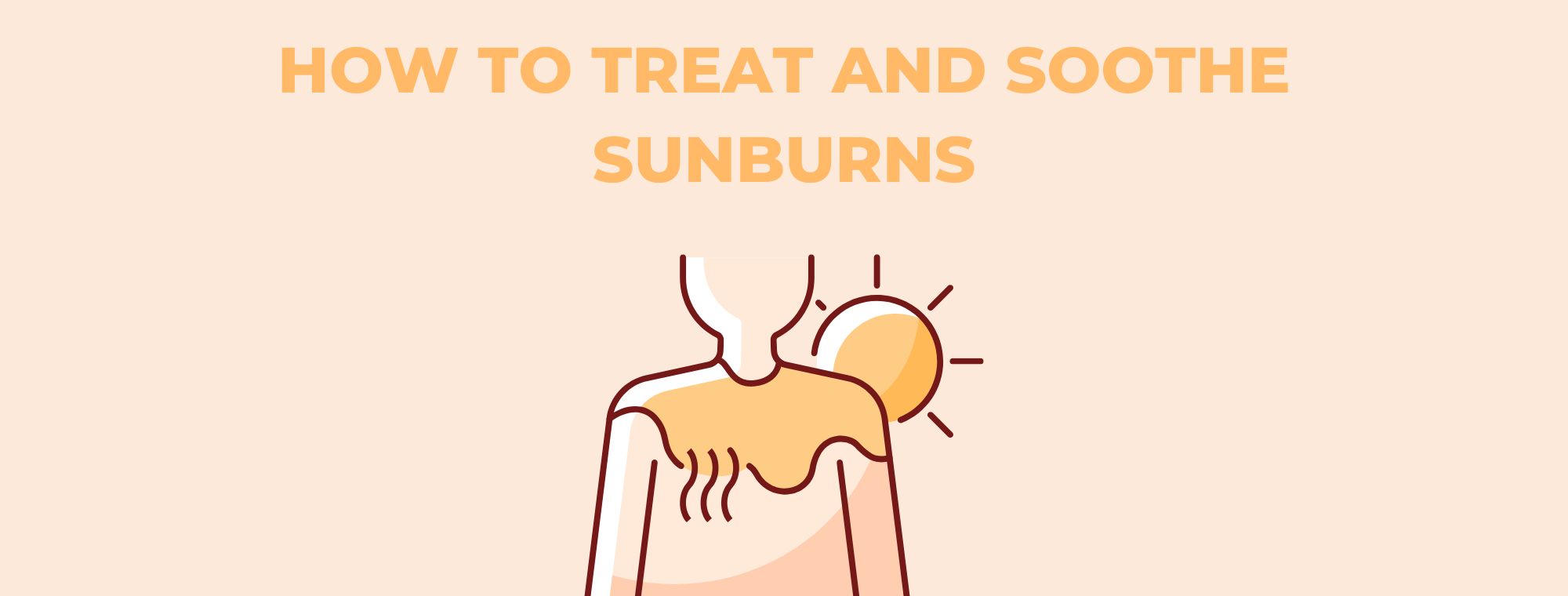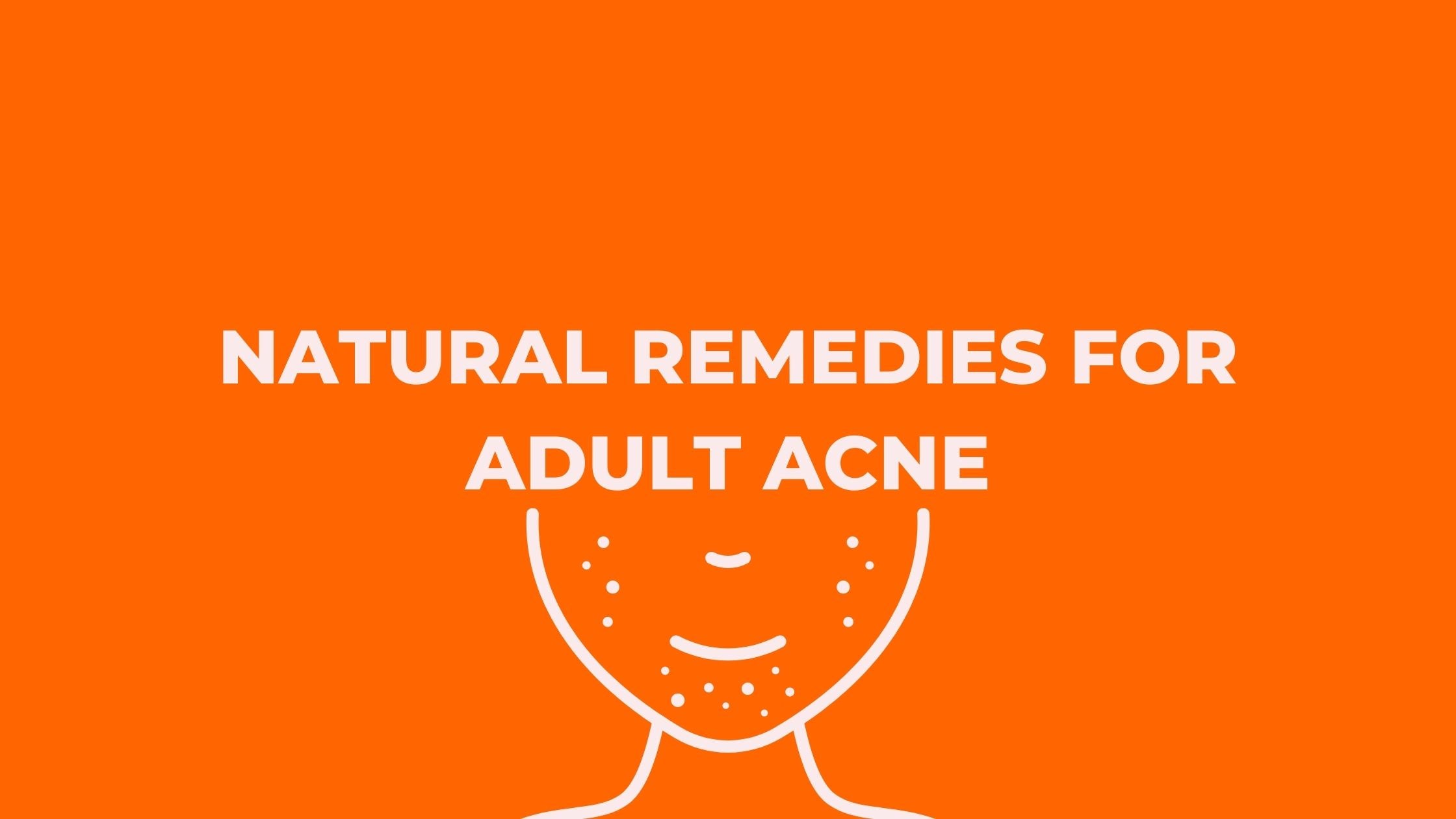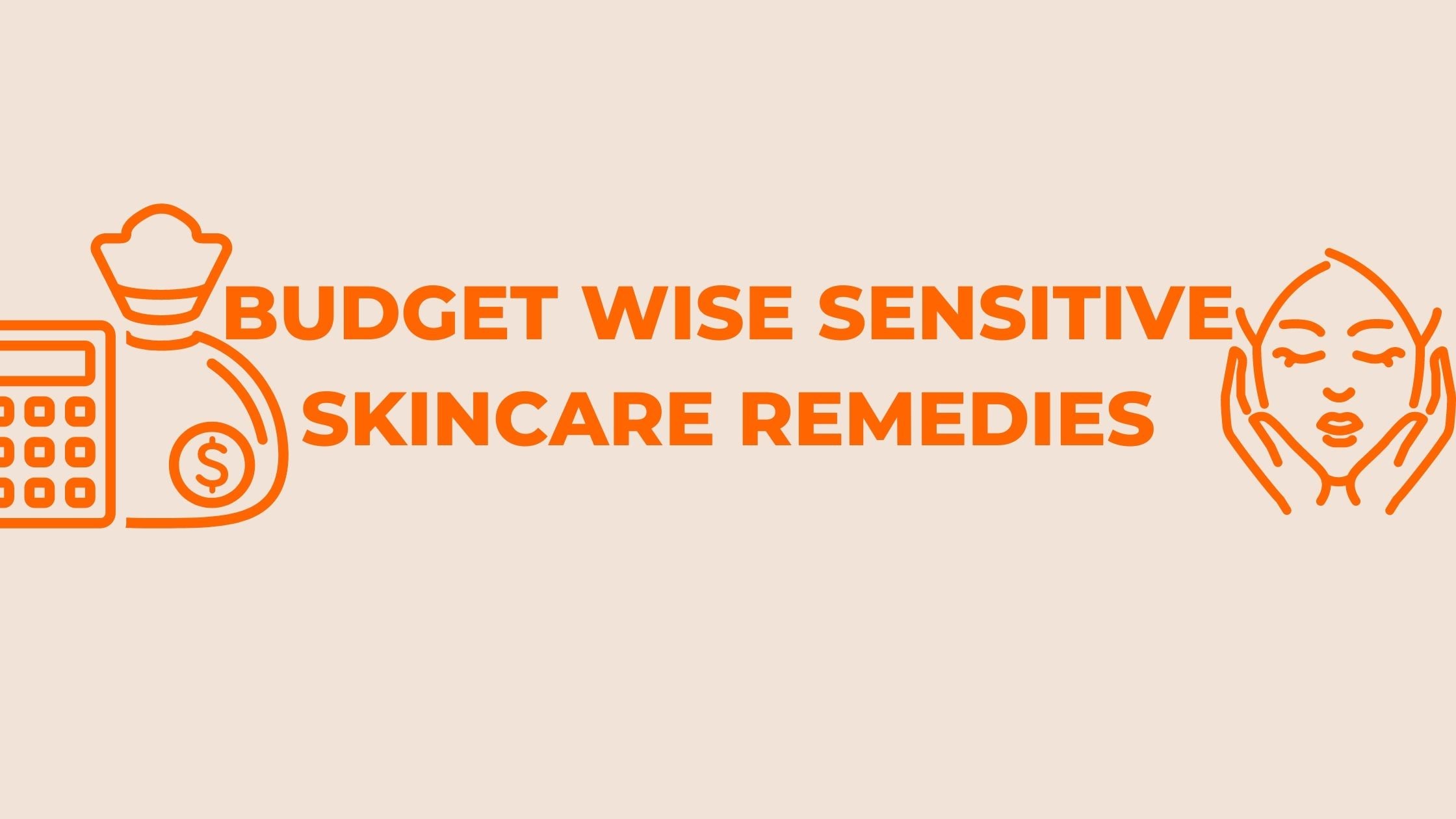
How to Treat and Soothe Sunburns
Even when summer comes to an end, sunburns can still burden your skin. The sun's rays are working year round, so whether you have a lingering burn from a tropical vacation, or you're one of the fair-skinned folks who burns in the dimmest of light, keep reading for tips for treating and soothing your sunburn.
How Do Sunburns Happen?
First, let’s break down what a sunburn is. Sunburns occur when Ultraviolet radiation (UV rays) from the sun attack the skin cells and mutate their DNA. Our bodies work their hardest to prevent and correct these mutations.
One way is by producing more of the skin pigment melanin to provide a shield from UV rays, resulting in what we know as a suntan. The bronzey glow of a suntan and UV protection? Sounds like a win-win right? Well not exactly.
As it blocks UV rays, tanning is damaging your skin, and it only produces about SPF 3 or 4 worth of UV ray protection. Eventually your body is unable to continue producing melanin, so the skin cells continue to take on UV rays, mutate, and eventually die. This causes our blood vessels to expand and send immune cells to the surface to heal your skin, and your cherry red skin comes to fruition.
Everyone’s genetics are different and lead to differing melanin levels that fight UV rays at different rates. This is why people with darker skin do not burn as easily, and fair skinned people are more prone to sunburns.
How long does a sunburn last?
You may not feel a sunburn coming on initially, and you typically don’t feel the pain or see the redness until 2-6 hours after sun exposure.
Different levels of UV damage take different lengths of time to heal and fade. A mild sunburn lasts about 3 days, a moderate sunburn lasts about 5 days, and a severe sunburn can last up to a week to ten days and may require medical attention.
How to get rid of a sunburn?
We’re sorry to say, but there is no way to heal a sunburn quickly. All there is to do is wait it out while your skin rejuvenates and restores itself, but there are some tips and tricks to soothe and remedy a sunburn while you patiently await sunburn-free bliss.
Tips for Sunburn Relief
- Wear Loose Fitting Clothes - Give your skin some space to breathe by wearing loose fitting clothing while your sunburn heals. Choose soft, breathable fabrics like cotton that won’t smother, rub against, and irritate your burn.
- Cold Showers - If you typically turn the heat up for your showers, crank the cold water knob instead to cool off your skin, and avoid drying out your already inflamed skin. You shouldn’t be taking scalding hot showers anyway. Learn more shower tips for healthy skin here.
- Leave Blisters Alone - Your skin may start to blister if you have a more severe second degree burn. These blisters are there to protect your skin while it heals, so do not pop, squeeze, or pick at blisters because this can expose the open skin to bacteria and cause infection.
- Drink Water - When your body is working to heal a sunburn, it brings a lot of water to the skin’s surface to try to restore the moisture that was lost when you burned. Drinking enough water is crucial to hydrate your skin cells and ensure you do not add dehydration to your list of ailments. If you’re having trouble drinking enough water, try an electrolyte drink or snack on hydrating fruits and vegetables like watermelon, cucumber, and berries.
- Avoid more sun exposure - Stay out of the sun as much as possible until your sunburn clears up so that your sunburn doesn’t get any worse. If you do have to go in the sun, apply sunscreen, and wear tightly knit fabrics that will shield your skin from UV rays.
Home Remedies for Sunburn
There are a few DIY options for at home sunburn treatment.
- Take a pain reliever - Over the counter pain relievers such as acetaminophen or ibuprofen can help reduce swelling and pain.
- Cold Compress - Wet a wrap an ice pack in cloth or wet a washcloth with cool water and press it over the affected area to help relieve some of the heat and discomfort.
What to Put on Sunburns
If ibuprofen, cool baths, drinking water, and soaking your burn aren’t quite doing the trick, try applying some of these topicals to alleviate the pain.
- Aloe Vera - Most after sun treatments contain aloe vera since it has anti-inflammatory properties that are soothing and cooling on the skin, and provides your skin with the hydration needed to help heal the burn. You can use creams and lotions formulated with aloe, but those may be packed with harmful additives, alcohol, and fragrance, so a pure 100% aloe vera gel or a whole leaf of aloe vera are the best options.
- Over the Counter Hydrocortisone Cream - Hydrocortisone creams are over the counter topicals that help relieve itchiness, swelling, and irritation, but do not apply to open skin or blisters.
- Oats - Oats have immense soothing and anti-itch properties which is why it’s a common ingredient in eczema treatments. Those same properties make it a great option for sunburn relief as well. Grind about ½ cup of oats in a blender or food processor and sprinkle them in your bath or mix it in with a non-comedogenic fragrance free lotion. Or tenderly use a sulfate-free cleansing bar formulated with oatmeal over sunburned areas instead of your normal body wash.
- Tea - The tannins and antioxidant content of tea leaves can help relieve some of the pain and inflammation. Brew a green or black tea (black tea is higher in tannins), let it cool down, and use a washcloth to dab it onto your sunburn, or if you’re targeting a smaller area like around the eyes or behind the ears, apply the damp tea bag directly to the area.
What not to Put on a Sunburn
- Oils and Petroleum - Thicker occlusives like oils and petroleum based products should not be applied to a sunburn because they can trap heat and sweat in, making it more difficult for your skin to heal.
- First aid sprays or creams with benzocaine or lidocaine - Benzocaine and lidocaine are used in many over the counter anesthetics, but they commonly cause allergic reactions which is the last thing you want on burned skin.
- Soaps and Sulfates - Sunburned skin is already dry, and the cleansing products you use could further dry out your burned skin, delaying healing time. Soaps with harsh, drying ingredients like sodium lauryl sulfate or sodium laureth sulfate are known to be drying, so swap your soap for a more gentle, SLS-free body wash.
How to Get Rid of Peeling Skin From a Sunburn
You should never pull skin off as it’s peeling because you may do so before the skin is ready to come off which can open the skin up to infection. Let the skin flake or peel off naturally when it is ready to do so.
When to See a Doctor for Sunburn
If you fell asleep in the sun or hiked through the Sahara without sunscreen on hand, your sunburn may be beyond repair from home remedies. Severe sunburns can lead to sun poisoning, second degree burns, or an infection.
Sunburns also make you more susceptible to dehydration and the heat related illness, heat stroke. Heat stroke can occur when the body’s core temperature rises above 104 degrees Fahrenheit, and sunburned skin is not as good at regulating heat and producing sweat.
If any of the following symptoms occur alongside your sunburn, it may be something more severe, so seek out medical attention from a doctor or board certified dermatologist.
- Dehydration
- Fever, chills, nausea
- Blisters that cover more than 20% of your body
- Signs of infection such as swollen red blisters, pus, bleeding, or a foul odor
- Muscle cramps and weakness
- Rapid pulse
- Dizziness or confusion
Preventing Sunburns
After you recover from your sunburn, you’ll likely be apt to take better care of your skin in the sun going forward so that you don’t burn again, and more importantly, so you don’t increase your risk of developing skin cancer down the line. The best steps to take to prevent sunburn are:
- Stay in the shade - The most effective way to prevent sunburn is to avoid sun exposure as much as possible by staying inside or in the shade, especially during the hours of 10am-4pm when UV rays are typically the strongest. You can still burn in the shade or inside so here’s why you should be wearing sunscreen indoors.
- Wear protective clothing - When you step into the sun, cover up as much skin as possible with long sleeves, UV protective clothing, sun hats, and sunglasses.
- Sunscreen - Any uncovered skin (and even skin covered with lightweight, non-UV protective fabrics) needs thorough sunscreen application. Thirty minutes before sun exposure, apply a broad spectrum sunscreen with an SPF of at least 30, and reapply every 2 hours or after swimming.
Conclusion
Yes, you need sunscreen when it’s cloudy and even when you’re inside. It’s also crucial that you are using enough sunscreen. You need at least an ounce (about a shot glass full) of sunscreen to cover your entire body, and about half a tablespoon for your face alone. Remember areas that are easily missed or forgotten like behind the ears and neck, the tops of your feet, your eyelids, and your hands.
Sunburns may be a temporary pain, but according to The Skin Cancer Foundation, just one severe sunburn during childhood can double your chance of developing melanoma later in life, and the more you burn the greater your risk of developing skin cancer.
The above tips can help take the edge off a bad burn, but the lasting damage of a sunburn is irreversible, so, above all else, make sure sunscreen is a pillar in your skin care routine.
Read more here about sunscreen and sunburn prevention.



1 comment
Very informative post. Thank you for sharing.
Jason Stone
Leave a comment
This site is protected by hCaptcha and the hCaptcha Privacy Policy and Terms of Service apply.